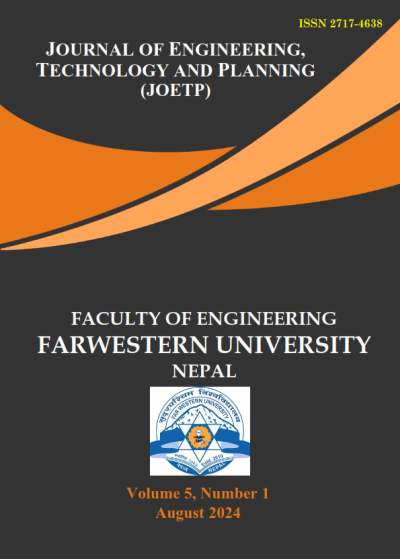Perception-Based Assessment of the Water Supply System in Bhimdatta Municipality, Sudurpashchim Province, Nepal
DOI:
https://doi.org/10.3126/joetp.v5i1.69730Keywords:
Water quality, Groundwater level, Water supply system, Urbanization, SDGsAbstract
Safe and adequate water supply is one of the serious and significant challenges for local governments in Nepal. The main objective of this study is to explore the community perception on existing water supply systems, its quality, and quantity alongside with associated problems in the Bhimdatta Municipality. The study adopted qualitative and quantitative methods with Systematic random sampling and purposive sampling techniques for data collection in 2024. A total of 379 households were selected across the 19 wards of municipality. The findings reveals that 44.9% of households use groundwater as their primary drinking water source, 31.9% rely on public supply, and the rest use both sources. The majority of respondents rated the water quality as good with 56.2%, while 26.4% rated as excellent, 10.8% as fair, 6.1% as poor, and 0.5% as very poor. Most of the respondents reported a lower incidence of diseases stemming from drinking water source, they noted problems such as taste, odor, turbidity, and color. Over the past decade, groundwater levels have declined, making access more difficult across all wards. This study provides vital insights for policymakers and stakeholders to address these challenges and improve water quality and accessibility.
Downloads
Downloads
Published
How to Cite
Issue
Section
License
Copyright © Faculty of Engineering, Far Western University

